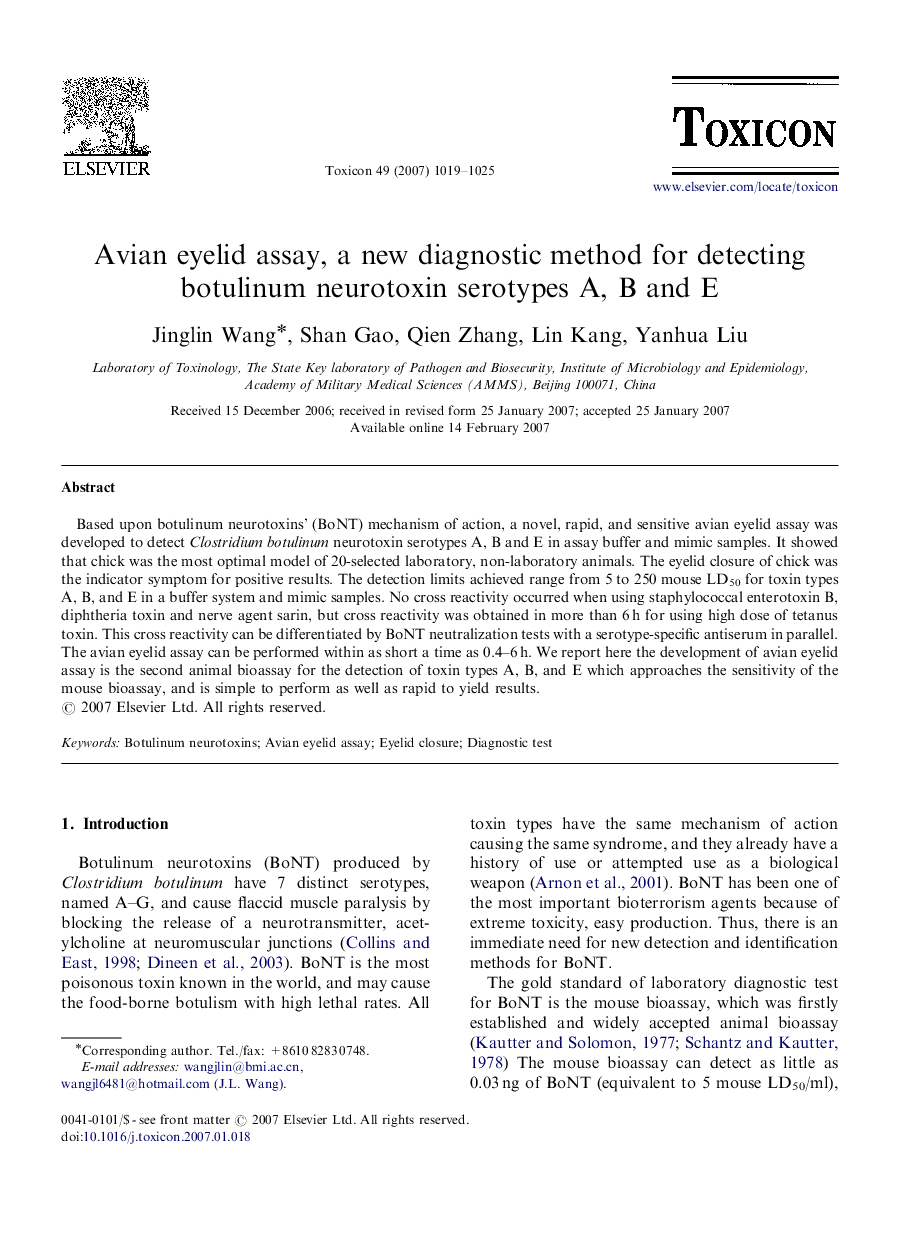| Article ID | Journal | Published Year | Pages | File Type |
|---|---|---|---|---|
| 2066844 | Toxicon | 2007 | 7 Pages |
Based upon botulinum neurotoxins’ (BoNT) mechanism of action, a novel, rapid, and sensitive avian eyelid assay was developed to detect Clostridium botulinum neurotoxin serotypes A, B and E in assay buffer and mimic samples. It showed that chick was the most optimal model of 20-selected laboratory, non-laboratory animals. The eyelid closure of chick was the indicator symptom for positive results. The detection limits achieved range from 5 to 250 mouse LD50 for toxin types A, B, and E in a buffer system and mimic samples. No cross reactivity occurred when using staphylococcal enterotoxin B, diphtheria toxin and nerve agent sarin, but cross reactivity was obtained in more than 6 h for using high dose of tetanus toxin. This cross reactivity can be differentiated by BoNT neutralization tests with a serotype-specific antiserum in parallel. The avian eyelid assay can be performed within as short a time as 0.4–6 h. We report here the development of avian eyelid assay is the second animal bioassay for the detection of toxin types A, B, and E which approaches the sensitivity of the mouse bioassay, and is simple to perform as well as rapid to yield results.
